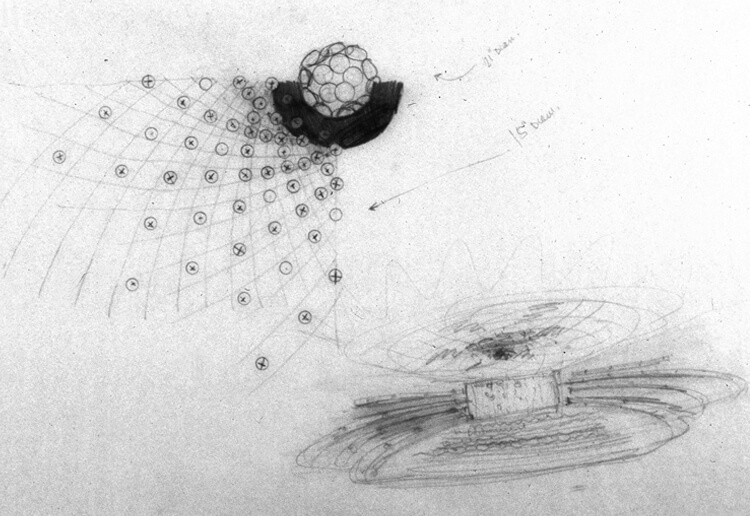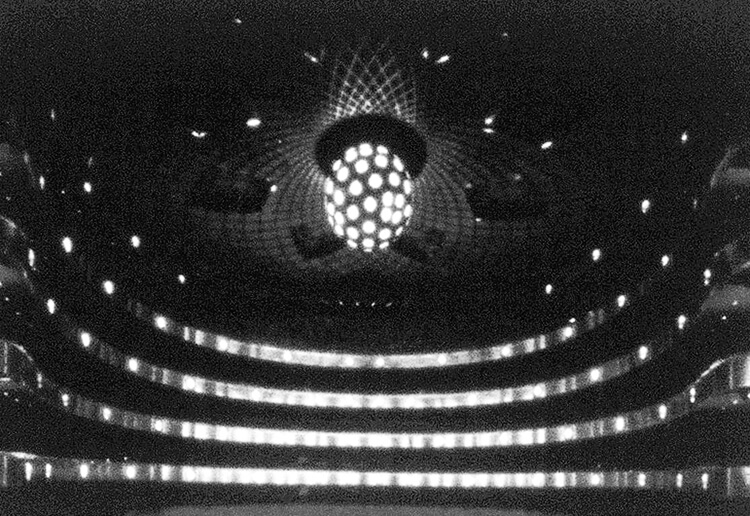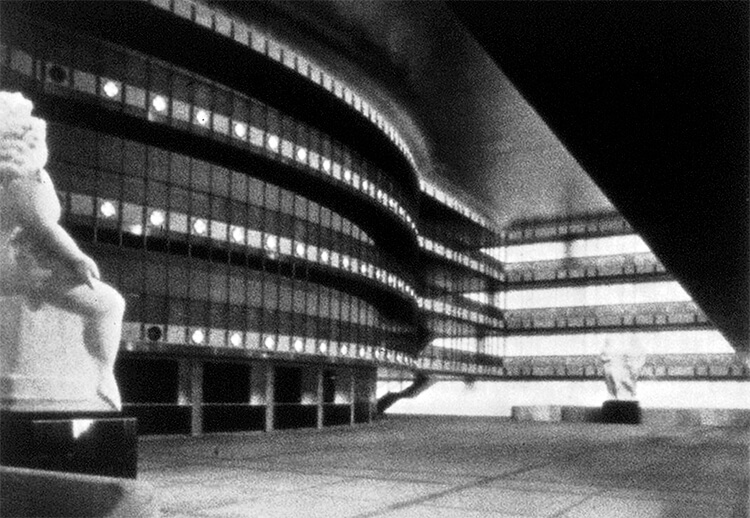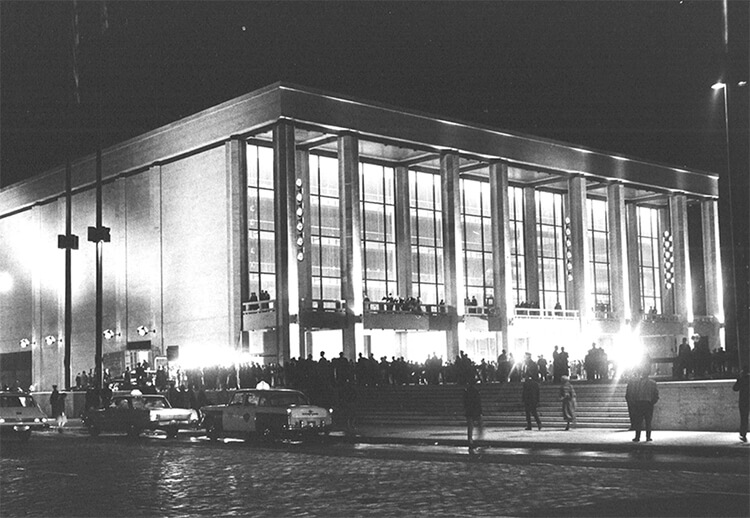NEW YORK STATE THEATER
Lincoln Center for the Performing Arts
New York, New York 1965
Architect: Philip Johnson
Kelly borrowed the term “play of brilliants” from the jewelry industry and, in designing the lighting for this project, embraced fully the meaning of the metaphor. Studying the crystalline structure of titanium diamonds, he developed the geometry for the auditorium chandelier and the balcony fascia fixtures.
For the theater auditorium he composed a cluster of 21-inch and 15-inch diameter light “diamonds” in a central, ten-foot diameter chandelier which floats in a galaxy of downlights that are recessed in the swirl of acoustical ceiling panels.
The grand foyer on the first balcony level is 45 feet high and three levels of balcony promenades line its perimeter. “Diamond” light fixtures punctuate the rings of the balconies like jewels in a crown, accentuating the stately richness and grandeur of the space. The multi-faceted, polyhedral structure of these fixtures maximizes the internal reflection of light and results in their brilliance. The face of the diamond is clear, molded Plexiglas and the light sources contained within are shielded from the front face by housings which are highly reflective on the exterior. The interior backing of the fixture is lined with a molded, specular reflector. The light is mirrored in this back reflector and the play of its reflection creates the diamond-like sparkle which also obscures the dark spots which would otherwise result from the light shields.


Sketch of auditorium with chandelier and downlights

Sketch of auditorium with chandelier and downlights as realized
Lincoln Center is a complex of five monumental structures, a large central plaza and several smaller connecting plazas. Each structure was designed by a different architect. Wallace K. Harrison, of the firm Harrison & Abramovitz, was coordinator of the design group and architect for the Metropolitan Opera House; Max Abramovitz, his partner, was architect of Philharmonic Hall; Eero Saarinen, in collaboration with Jo Mielziner, designed the Vivian Beaumont Theater; the Library-Museum of the Performing Arts was designed by Gordon Bunshaft of Skidmore, Owings and Merrill; the architect for the Juilliard School of Music and Residents’ Hall was Pietro Belluschi and the collaborating firm of Catalano and Westermann. Philip Johnson designed the central plaza as well as the New York State Theater. Kelly designed the lighting for each area with the exception of the interior of the Metropolitan Opera House.

Grand foyer with “diamond” light fixtures.

New York State Theater exterior at night, facing the central plaza.
